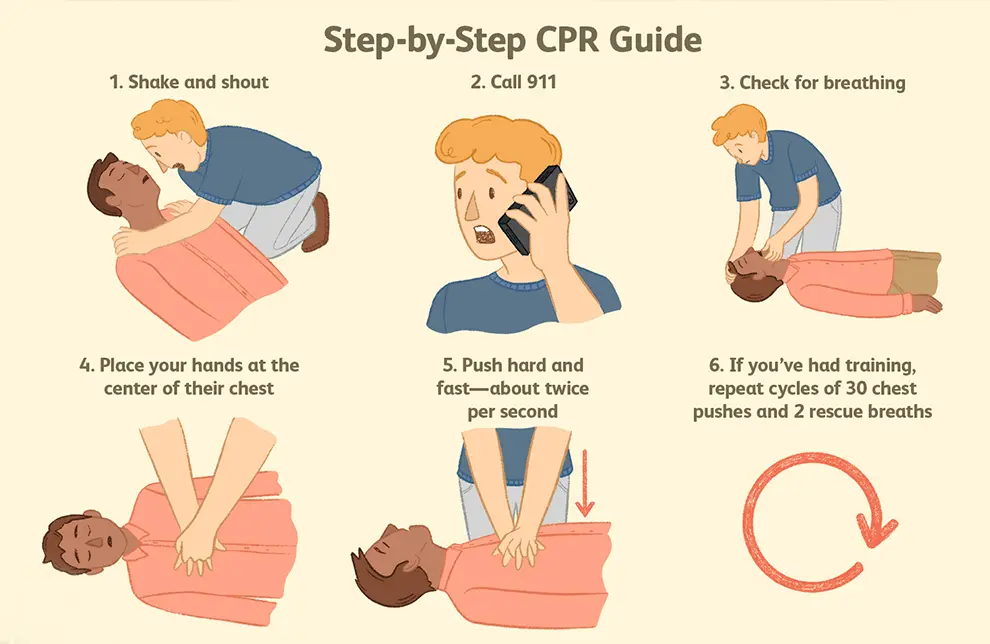Key Highlights:
- You can perform CPR even without formal training by following basic chest compressions and rescue breaths.
- Knowing when and how to act can increase survival chances in an emergency.
- Always call emergency services first before starting CPR.

Why Knowing CPR Matters
Imagine this: Someone collapses at home, gasping for air or not breathing at all. Would you know what to do? In situations like this, acting fast can be the difference between life and death.
While professional CPR training is the best way to prepare, you can still perform basic CPR without formal certification.
But before we proceed I want to encourage understand why learning first is important.
Let continue. This guide will walk you through the essential steps to help save a life. it is an overview of how to perform CPR for infants, children, and adults.
DIY CPR Techniques for Emergencies

1. Call Emergency Services First
- Dial your local emergency number: In most places, it's 911, but in Ghana, it's 112.
- Explain the situation: Clearly and calmly tell the EMTs that someone is unresponsive and not breathing.
- Follow their instructions: They might give you guidance over the phone while help is on the way.
2. Check for Responsiveness
- Approach the person safely: Make sure the environment is safe for you to approach.
- Gently shake and shout: Gently shake the person’s shoulders and shout, “Are you okay?” to see if they respond.
- Check for breathing: Look, listen, and feel for breathing. Put your ear close to their mouth and nose while looking at their chest for any movement. If they’re not breathing or only gasping, you need to start CPR immediately.
3. Hands-Only CPR for Adults

- Position your hands: Place the heel of one hand on the center of the person’s chest, right between the nipples.
- Interlock your fingers: Place your other hand on top of the first and interlock your fingers. Ensure your fingers are lifted off the chest and only the heels of your hands are touching the chest.
- Begin compressions: With your arms straight and shoulders directly above your hands, push hard and fast. You need to press down at least 2 inches into the chest and at a rate of 100-120 compressions per minute. Think of the beat of the song "Stayin' Alive" by the Bee Gees to maintain the rhythm.
- Allow full recoil: After each compression, let the chest rise completely before pressing down again. This allows the heart to refill with blood.
- Continue until help arrives: Keep performing compressions without stopping until medical help arrives or the person starts breathing on their own.
4. CPR with Rescue Breaths for Children & Infants
Chest compressions for children: Use one hand (instead of two) to perform compressions on children aged 1 to 8. Follow the same steps as for adults, but only press down about 2 inches.
Chest compressions for infants: Use two fingers to perform compressions on infants under 1 year old. Place your fingers in the center of the chest, just below the nipple line. Press down about 1.5 inches.
Open the airway: Tilt the head back slightly to open the airway. For infants, be very gentle.
Give rescue breaths: After 30 chest compressions, give two rescue breaths. Pinch the person's nose shut, cover their mouth with yours, and blow until you see their chest rise. For infants, cover their mouth and nose with your mouth and use gentle breaths.
Continue cycles of compressions and breaths: Perform 30 compressions followed by 2 rescue breaths. Repeat this cycle until help arrives or the child/infant starts breathing on their own.
5. Use an AED if Available
- Turn on the AED: If there's an Automated External Defibrillator (AED) nearby, turn it on and follow the voice instructions.
- Attach the pads: Place the pads on the person’s bare chest as shown in the diagrams on the AED. One pad goes on the upper right chest and the other on the lower left side.
- Follow the AED's instructions: The AED will analyze the heart rhythm and instruct you to deliver a shock if necessary. Stand clear of the person when delivering the shock.
- Resume CPR: Continue CPR until the AED tells you to stop or until help arrives.
Common Mistakes to Avoid
- Don’t hesitate: Any attempt at CPR is better than no attempt. Acting fast can save a life.
- Avoid shallow compressions: Make sure you’re pressing down deep enough—at least 2 inches for adults.
- Call for help first: Always dial emergency services before starting CPR.
Stay Prepared, Stay Safe!
Remember, while professional CPR training is invaluable, knowing these basic steps can make a huge difference in an emergency.
Consider taking an official CPR and first aid course to boost your confidence and skills.
Stay prepared, stay safe!
Have questions? Feel free to ask!

